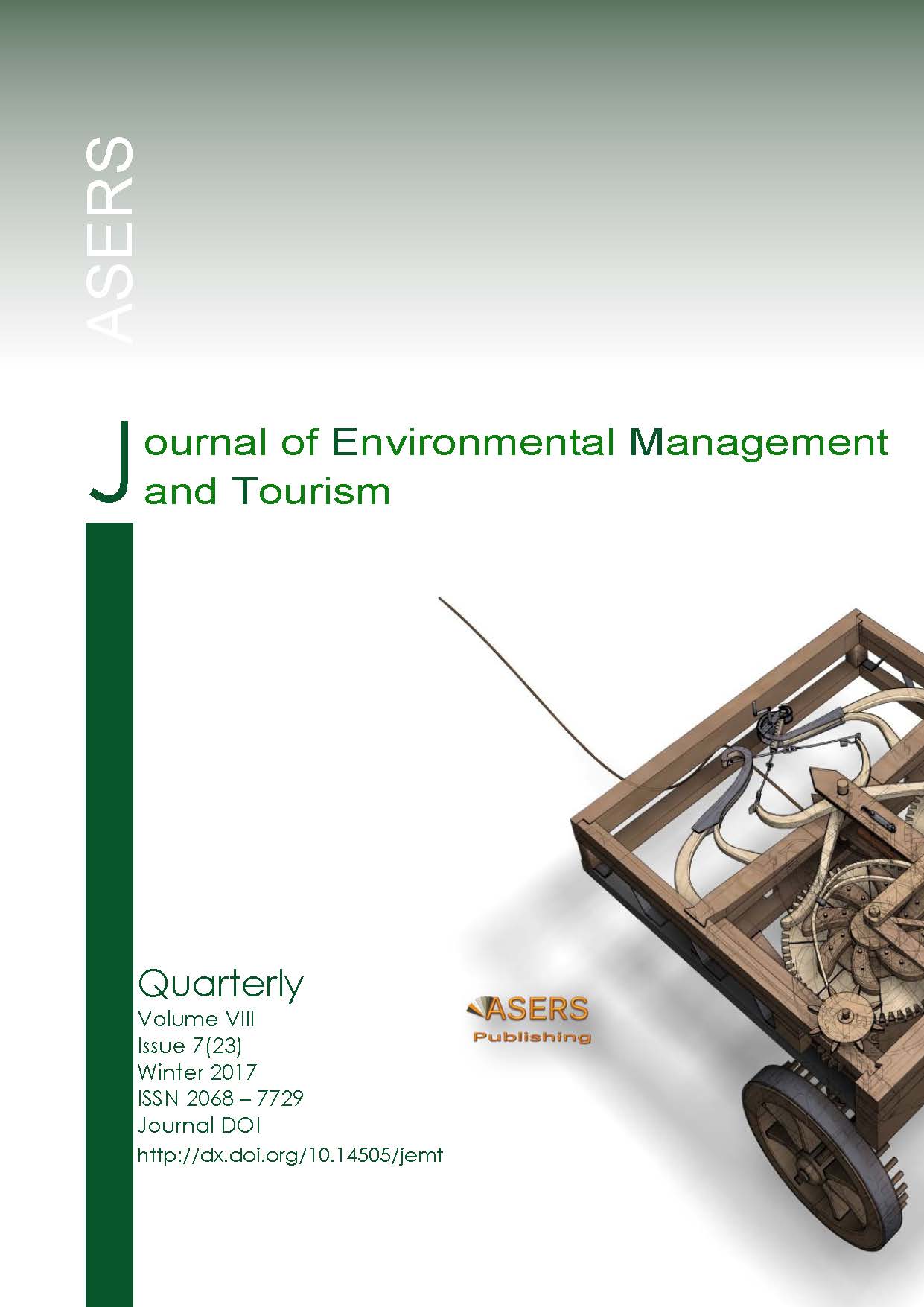The Effects of the Management of Natural Energy Resources in the European Union
Abstract
This paper is devoted to the study of the impact of the management of natural energy resources on sustainable development and green growth. The object of the study is the process of management of natural energy resources.
An indicator of adjusted net savings was used to estimate sustainable development. The performed comparative analysis of the adjusted net savings without subtraction and subtraction of the costs of extracting energy natural resources as a result of the synthesis shows a significant difference. It is on average for 2012-2016 is 4% of gross national income for the whole world. When subtracting production costs, the adjusted net savings will be much smaller and this fact must be taken into account.
In order to simultaneously take into account the economic situation of the country, the depletion of energy resources, their consumption, and the consequence of consumption, relevant indicators are proposed, as well as a special index for estimating the changes over time. The results of the study show that most countries in the European Union have positive adjusted energy and carbon efficiency, since they are higher than global measures. In addition, the relationship between carbon efficiency and energy efficiency in these countries is still very close. The analysis of changes in time as a result of synthesis also showed positive results, according to which the adjusted energy efficiency in most countries of the European Union is growing. According to the high growth rates of this indicator, some countries have a good opportunity to make significant progress in green growth, although this may require expensive investments.
References
[2] Bolt, K., Matete, M., and Clemens, M. 2002. Manual for calculating adjusted net savings. Environment Department, World Bank, 1-23.
[3] BP. 2017. BP Statistical Review of World Energy June 2017. Pureprint Group Limited. Available at: https://www.bp.com/content/dam/bp/en/corporate/pdf/energy-economics/statistical-review-2017/bp-statistical-review-of-world-energy-2017-full-report.pdf
[4] Dimitropoulos, J. 2007. Energy productivity improvements and the rebound effect: An overview of the state of knowledge. Energy Policy, 35 (12): 6354-6363. DOI: http://dx.doi.org/10.1016/j.enpol.2007.07.028
[5] Dixon, J., et al. 1997. Expanding the Measure of Wealth. Indicators of Environmentally Sustainable Development. The World Bank. Washington D.C.
[6] Ekins, P. 2000. Economic Growth and Environmental Sustainability. The Prospects for Green Growth. Routledge Publishing, London.
[7] Ekins, P., Simon, S., Deutsch, L., Folke, C., and De Groot, R. 2003. A framework for the practical application of the concepts of critical natural capital and strong sustainability. Ecological Economics, 44(2-3): 165-185. DOI: http://dx.doi.org/10.1016/S0921-8009(02)00272-0
[8] Geller, H., Harrington, P., Rosenfeld, H., Tanishima, S., and Unander, F. 2006. Policies for increasing energy efficiency: thirty years of experience in OECD countries. Energy Policy, 34: 556-573. DOI: http://dx.doi.org/10.1016/j.enpol.2005.11.010
[9] Hamilton, K., and Clemens, М. 1999. Genuine Savings Rates in Developing Countries. World Bank Economic Review, 13(2): 33-56.
[10] Janicke, M. 2012. ''Green Growth'': From a Growing Eco-Industry to Economic Sustainability. Energy Policy, 48: 13-21. DOI: http://dx.doi.org/10.1016/j.enpol.2012.04.045
[11] Kovalov, B., Burlakova, I., and Voronenko, V. 2017. Evaluation of Tourism Competitiveness of Ukraine's Regions. Journal Of Environmental Management And Tourism, 8(2): 460-466. DOI: https://doi.org/10.14505//jemt.v8.2(18).19
[12] Lorek, S., and Spangenberg, J. 2014. Sustainable consumption within a sustainable economy – beyond green growth and green economies. Journal of Cleaner Production, 63: 33-44. DOI: http://dx.doi.org/10.1016/j.jclepro.2013.08.045
[13] Lyulyov, O., and Shvindina, H. 2017. Stabilization Pentagon Model: application in the management at macro- and micro-levels. Problems and Perspectives in Management, 15(3): 42-52. DOI: http://dx.doi.org/10.21511/ppm.15(3).2017.04
[14] OECD. 2014. Green Growth Indicators 2014. OECD Green Growth Studies, OECD Publishing. Available at: http://dx.doi.org/10.1787/9789264202030-en
[15] Pearce, D., and Atkinson, G. 1993. Capital theory and the measurement of sustainable development: an indicator of weak sustainability. Ecological Economics, 8: 103-108. DOI: http://dx.doi.org/10.1016/0921-8009(93)90039-9
[16] Steinberger, J., and Krausmann, F. 2011. Material and energy productivity. Environmental Science and Technology, 45(4): 1169-1176. DOI: http://dx.doi.org/10.1021/es1028537
[17] Wang, K. and Wei, Y.-M. 2016. Sources of energy productivity change in China during 1997–2012: A decomposition analysis based on the Luenberger productivity indicator. Energy Economics. 54: 50-59. DOI: http://dx.doi.org/10.1016/j.eneco.2015.11.013
[18] Wang, K., Xian, Y., Wei, Y.-M., and Huang, Z. 2016. Sources of carbon productivity change: A decomposition and disaggregation analysis based on global Luenberger productivity indicator and endogenous directional distance function. Ecological Indicators, 66: 545-555. DOI: http://dx.doi.org/10.1016/j.ecolind.2016.02.034
[19] World Bank. 2012. The Little Green Data Book 2012. Washington, DC: World Bank. DOI: http://dx.doi.org/10.1596/978-0-8213-8993-5
[20] World Bank. 2013. The Little Green Data Book 2013. Washington, DC: World Bank. DOI: http://dx.doi.org/10.1596/978-0-8213-9814-2
[21] World Bank. 2014. The Little Green Data Book 2014. Washington, DC: World Bank. DOI: http://dx.doi.org/10.1596/978-1-4648-0175-4
[22] World Bank. 2015. The Little Green Data Book 2015. Washington, DC: World Bank. DOI: http://dx.doi.org/10.1596/978-1-4648-0560-8
[23] World Bank. 2016. The Little Green Data Book 2016. Washington, DC: World Bank. DOI: http://dx.doi.org/10.1596/978-1-4648-0928-6
Copyright© 2025 The Author(s). Published by ASERS Publishing 2025. This is an open access article distributed under the terms of CC-BY 4.0 license.
